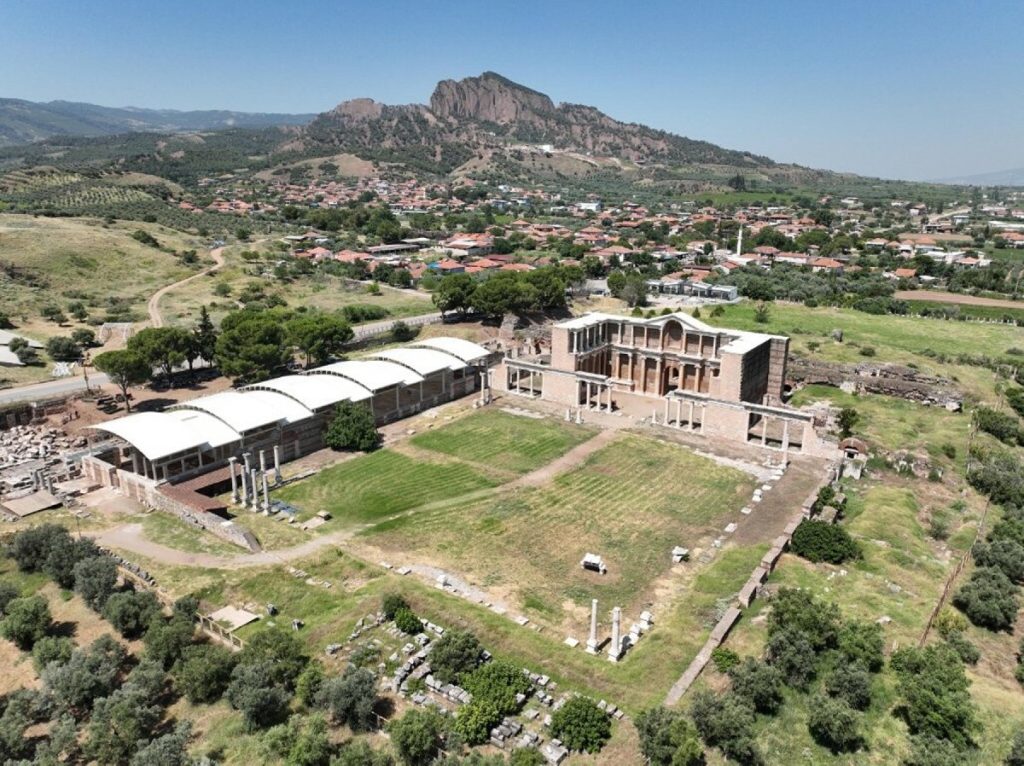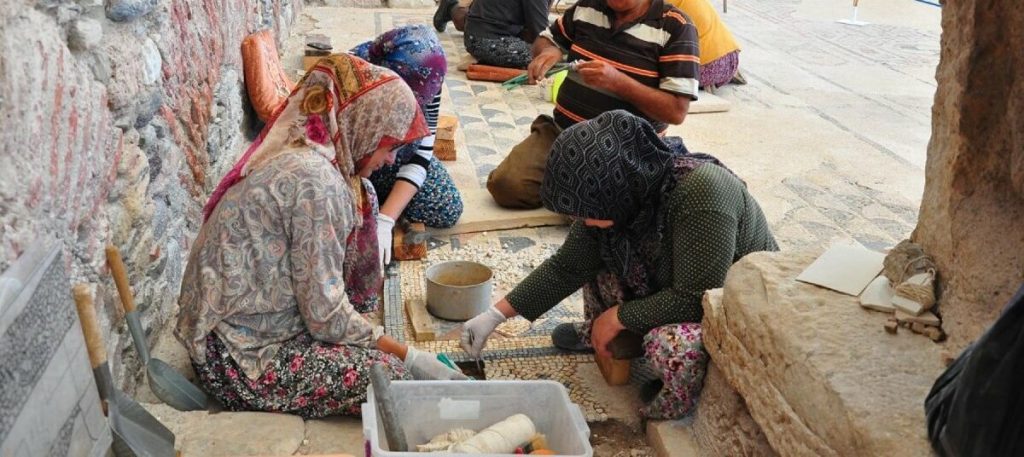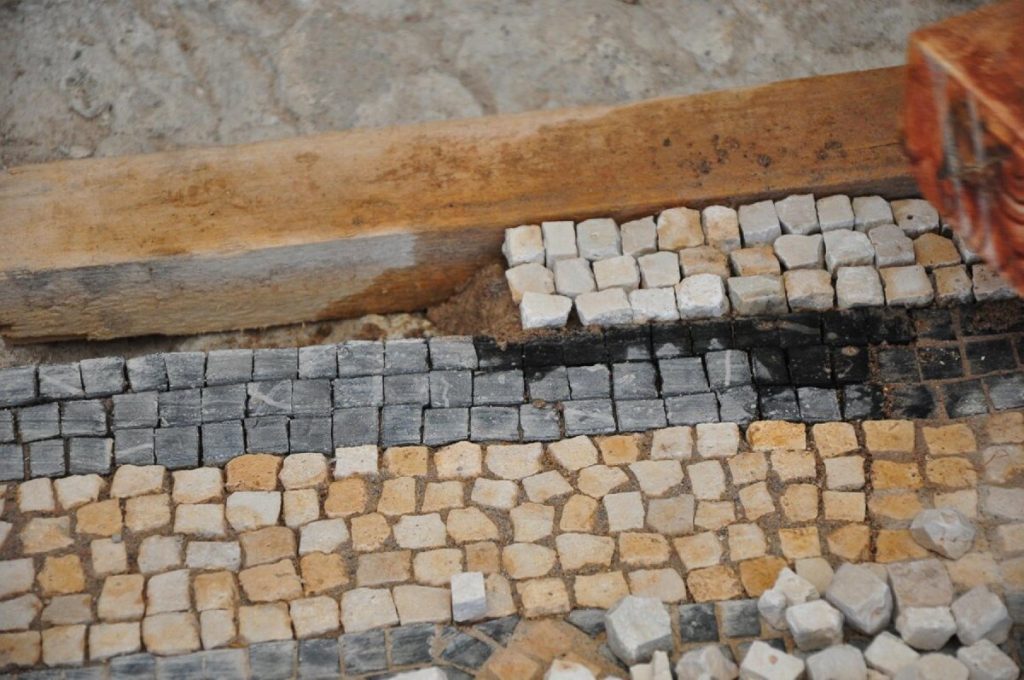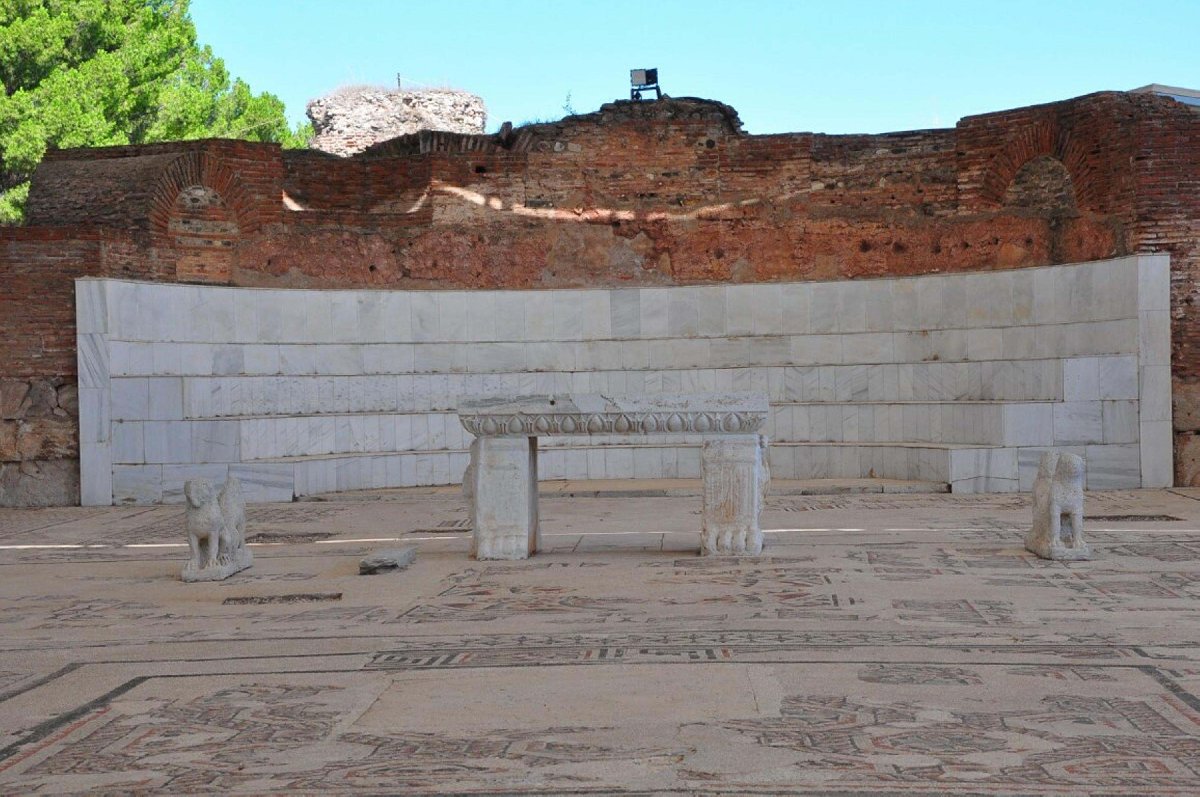The ancient world’s largest synagogue, unearthed in the ancient city of Sardis, the capital of the Lydia Kingdom where the first coin was minted under state guarantee, is undergoing restoration.
The Lydia Kingdom was a kingdom that existed in the western region of Anatolia approximately between 1200 BC and 546 BC.
Excavations have been ongoing for 159 years in Sardis, the capital of the Lydia Kingdom.
During the excavations, numerous structures and artifacts from various cultures such as Lydia, Persia, Hellenistic, Roman, Byzantine, and others were unearthed in the city.
At the same time, the largest synagogue of the ancient era was also found in the area.

In the book of Revelation in the Bible, Sardis, which played a significant role in the spread of Christianity to the west, also holds a distinct religious importance. At the same time, the synagogue, which serves as evidence of the presence of the Jewish community and where the temples were located, still retains its splendor.
Two years ago, the Sardis Synagogue was covered with an iron roof, and last year, the restoration works on its floor began. The mosaic stones on the floor are being meticulously repaired by nine village women.

The names of the contributors who provided funding for the construction of the building are inscribed on the walls in Greek.
The excavation leader, Prof. Dr. Nicholas Cahill, stated, “The synagogue was unearthed in 1963. The mosaic on the floor was removed and reinstalled in modern iron panels. However, due to the excavation process, many gaps were left behind. Together with the women, we are repairing those gaps in the floor and restoring them with mosaic stones to match the original design.

It is an interesting building, the largest synagogue in the ancient world, and a very luxurious structure. The floor is adorned with mosaics, and the walls are covered with colorful marble. The names of the contributors to the construction of the building are inscribed on the walls, and the inscriptions in Greek indicate who provided the funding for the construction. Through the findings from our excavations, we are delving into much earlier historical levels, trying to better understand the history of the city.”
Cover Photo DHA




